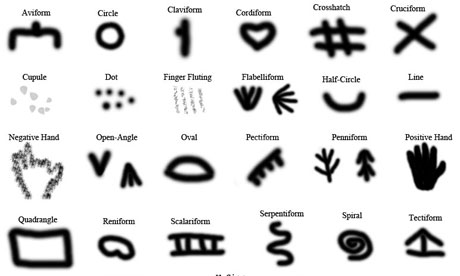Scholars from the University of Victoria, British Columbia, have revealed evidence that would push the birth of written communication substantially earlier than the current view.
Visit the caves of Pech Merle, Font-de-Gaume and Rouffignac in southern France and you will witness some of the most breathtaking art our planet has to offer. Images of bisons, lions and other creatures loom from the cavern walls….Instead of studying those magnificent galloping horses and bisons, researchers are investigating the symbols painted beside them.
These signs are rarely mentioned in most studies of ancient cave art. Some are gathered in groups, some appear in ones or twos, while others are mixed in with the caves’ images of animals. There are triangles, squares, full circles, semicircles, open angles, crosses and groups of dots. Others are more complex: drawings of hands with distorted fingers (known as negative hands); rows of parallel lines (called finger flutings); diagrams of branch-like symbols known as penniforms, or little sketches of hut-like entities called tectiforms. In total, 26 specific signs are used repeatedly in these caves, created in the millennia when Europe descended into – and emerged from – the last great Ice Age.
“These symbols are all over these cave walls, but no one really notices them,” says Genevieve von Petzinger, of the University of Victoria, in British Columbia. …
That is a mistake, according to von Petzinger. For the symbols provide clear evidence of the way our ancestors moved from representing ideas realistically – as in those beautiful images of bisons and mammoths – to the stage where they began to represent concepts symbolically. …
Working with her colleague April Nowell, she has created a database of all the signs found in more than 200 caves and other shelters in France and Spain. The aim was to study where and when they were first used, and in what combinations, and to compare them with markings found on other ancient artefacts. The results are startling, for the database shows many symbols are frequently arranged in specific clusters repeated over and over again in different caves (a negative hand with finger fluting, for example). …
In effect, this work is part of an information revolution, adds von Petzinger. “Scientists had noticed these symbols before, but until we made our database we could not analyse them properly. Today, I can ask my database any question I like. For example, how many hectiforms are found at each cave that were painted, say, between 15,000 and 20,000 years ago? That slowly pulls out the patterns.”
Photograph: Genevieve von Petzinger
Behold, the power of quantification, deconstruction, and systematic recording!


